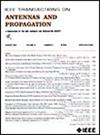Analysis and Suppression of Electromagnetic Coupling Interference Through Ceramic Substrate in SiP With Multicavity Shielding
IF 5.8
1区 计算机科学
Q1 ENGINEERING, ELECTRICAL & ELECTRONIC
引用次数: 0
Abstract
Multicavity shielding technology is widely used to suppress electromagnetic radiation interference between multiple chips in system in package (SiP). However, slots formed by the patterned top metal layer of ceramic substrate can lead to electromagnetic radiation leakage into the substrate, thereby exciting resonance in ceramic substrate with high-permittivity. This article analyzes the electromagnetic leakage caused by slots and identifies the ceramic substrate as a coupling path for interfering electromagnetic waves. The primary resonant mode of ceramic substrate, TE多腔屏蔽SiP中陶瓷基板电磁耦合干扰分析与抑制
多腔屏蔽技术在系统级封装(SiP)中被广泛用于抑制多芯片之间的电磁辐射干扰。然而,陶瓷基板顶部金属层的图案形成的凹槽会导致电磁辐射泄漏到基板中,从而在高介电常数的陶瓷基板中激发共振。本文分析了缝隙引起的电磁泄漏,确定了陶瓷衬底是干扰电磁波的耦合路径。陶瓷衬底的主谐振模式TE ${}_{mn(p+\delta)}$是影响SiP多腔屏蔽效果的关键因素。进一步分析表明,可以通过尺寸和材料优化来降低衬底的质量因子(Q),从而减轻耦合干扰。然而,完全阻断耦合能仍然是一个挑战。为了抑制耦合干扰,提出了一种基于衬底集成腔(SIC)和电磁带隙(EBG)的复合屏蔽结构。EBG沿着SIC壁构建,通过水平周期性金属贴片和垂直通过阵列形成三维EBG。与二维EBG相比,这种结构可以在衬底内实现多层谐振抑制。仿真结果表明,所提出的EBG-SIC在SIC谐振腔内实现了5.73 ~ 11.5 GHz的宽带抑制,并通过近场扫描实验验证了屏蔽效果。
本文章由计算机程序翻译,如有差异,请以英文原文为准。
求助全文
约1分钟内获得全文
求助全文
来源期刊
CiteScore
10.40
自引率
28.10%
发文量
968
审稿时长
4.7 months
期刊介绍:
IEEE Transactions on Antennas and Propagation includes theoretical and experimental advances in antennas, including design and development, and in the propagation of electromagnetic waves, including scattering, diffraction, and interaction with continuous media; and applications pertaining to antennas and propagation, such as remote sensing, applied optics, and millimeter and submillimeter wave techniques

 求助内容:
求助内容: 应助结果提醒方式:
应助结果提醒方式:


